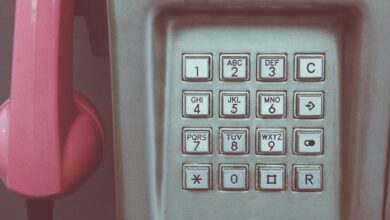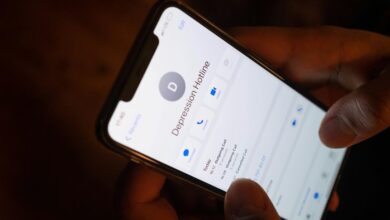Lookup Any Mobile or Landline: 2674330213, 2692665240, 2694888911, 2708255959, 2722027318, 2815246349

The inquiry into phone numbers such as 2674330213, 2692665240, and others raises important questions about identification and privacy. Utilizing reverse phone lookup services can yield insights into the ownership of these numbers. However, the effectiveness of these tools varies, and users must consider potential privacy implications. Understanding the nuances of these services may reveal more than just caller identities, prompting further investigation into the nature of unknown calls. What factors should one prioritize in this pursuit?
Understanding Phone Number Lookup Services
Phone number lookup services have become indispensable tools in the digital age, offering users a means to identify the owner of a phone number and gather associated information.
These platforms facilitate phone number verification, enhancing communication security. However, they raise significant privacy concerns, as users may inadvertently expose personal data.
Understanding these dynamics is essential for navigating the balance between security and individual privacy rights.
How to Identify Unknown Callers
Identifying unknown callers can be effectively achieved through several methods.
Reverse phone lookup services provide detailed information about the caller’s identity, while online directories offer accessible public records.
Additionally, call blocking apps enhance user control by filtering unwanted calls, thereby improving overall phone security.
Use Reverse Phone Lookup
Utilizing reverse phone lookup services enables individuals to uncover the identities of unknown callers efficiently.
The reverse lookup benefits include enhanced security and the ability to manage communication effectively.
However, users must remain vigilant regarding privacy concerns, as sharing personal information can lead to unintended consequences.
Balancing the advantages of identification with the potential risks is crucial for informed decision-making.
Check Online Directories
Accessing online directories serves as a valuable method for individuals seeking to identify unknown callers.
To effectively utilize these online resources, one should consider the following:
- Verify directory accuracy by cross-referencing multiple sources.
- Utilize paid services for comprehensive results.
- Explore user-generated content for additional insights.
- Regularly update searches to ensure current information.
These steps enhance the identification process of unknown callers.
Utilize Call Blocking Apps
While many individuals grapple with the challenge of unknown callers, leveraging call blocking apps can significantly streamline the identification process.
These apps often include features such as caller ID, spam detection, and user-generated reports, facilitating informed decision-making about incoming calls.
Tools for Reverse Phone Lookup
Reverse phone lookup tools serve as essential resources for individuals seeking to identify unknown callers or verify contact information.
These tools enhance user autonomy by providing access to necessary data. Key features include:
- Comprehensive databases
- User-friendly interfaces
- Caller identification tools
- Integration with reverse lookup services
Such functionalities empower users to make informed decisions regarding phone interactions, thereby promoting a sense of security and freedom.
Safety Tips for Answering Unknown Calls
When encountering unknown calls, individuals should approach the situation with caution to mitigate potential risks.
Employing call screening techniques is advisable, allowing users to identify callers before answering. This practice addresses privacy concerns, ensuring personal information remains secure.
Additionally, individuals should refrain from sharing sensitive data until verifying the caller’s identity. Prioritizing safety can significantly reduce exposure to potential scams or unwanted solicitations.
Case Studies: Analyzing Specific Phone Numbers
Understanding the context of unknown calls can lead to valuable insights when analyzing specific phone numbers. Effective phone number analysis often involves examining:
- Caller identification patterns
- Call frequency and duration
- Geographic origin
- Historical data of similar numbers
Case study examples reveal trends that enhance understanding, empowering individuals to make informed decisions regarding potential communications and their implications on personal freedom and privacy.
When to Report Harassing Calls
Identifying the signs of harassment is crucial in determining when to take action against unwanted calls.
Proper documentation of call details enhances the effectiveness of reporting procedures, ensuring that relevant information is presented clearly to authorities.
Understanding the appropriate steps to report such incidents can facilitate a more effective response and potential resolution.
Recognizing Harassment Signs
Although many phone calls may be innocuous, certain patterns of communication can indicate harassment, necessitating timely reporting.
Key signs to consider for harassment prevention include:
- Repeated calls from the same number.
- Unsolicited communication outside of normal hours.
- Use of threatening or abusive language.
- Attempts to manipulate or intimidate.
Recognizing patterns in these interactions is crucial for effective intervention and personal safety.
Documenting Call Details
Documenting call details is a critical step in addressing harassing phone calls, as accurate records can provide vital evidence for reporting to authorities.
Maintaining detailed call logs and reviewing call history enables individuals to establish patterns of harassment.
Essential information includes dates, times, caller IDs, and the nature of the calls, facilitating a comprehensive understanding necessary for potential interventions and protective measures.
Reporting Procedures Explained
The accumulation of detailed call logs provides a foundation for understanding when to escalate the situation regarding harassing phone calls.
Adhering to established reporting protocols is essential. Consider the following escalation procedures:
- Document the nature of the calls.
- Identify patterns in frequency and content.
- Report to the service provider.
- Notify local authorities if necessary.
These steps aid in formalizing the complaint process.
Conclusion
In a world where anonymity reigns supreme, the quest for truth in phone number identification mirrors the greater societal challenge of distinguishing fact from fiction. As individuals navigate the murky waters of reverse phone lookup services, they may find themselves engaging in a digital scavenger hunt, only to uncover the irony that true security often lies not in the identification of unknown callers, but in the conscious choice to disconnect from the cacophony of modern communication altogether.




